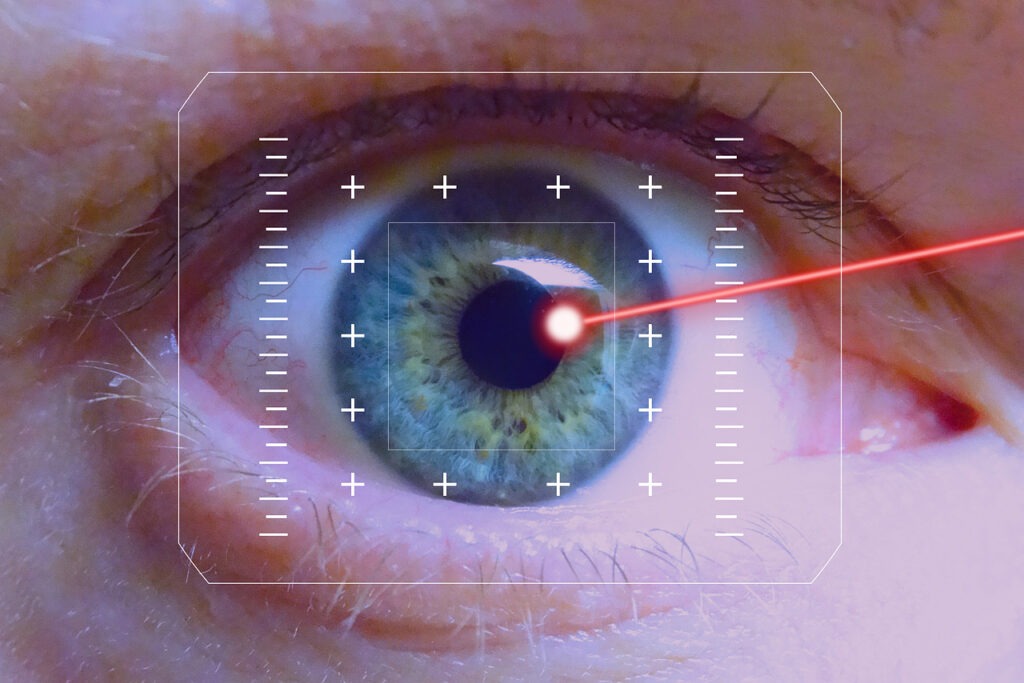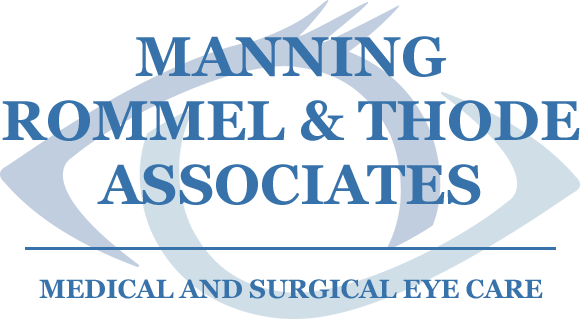Do you dream about being able to jump out of bed in the morning and see everything clearly with no need to reach for your glasses? Or what about being able to go golfing or for a run without having to put your contacts in? If you find yourself wondering what it would be like to not have to rely on glasses or contacts to see clearly, it may be time to talk with your eye physician about laser vision correction options.

Laser vision correction is a great alternative to eyeglasses and contact lenses that can help you see more naturally. The concept behind vision correction is simple – reshaping the front of the eye with lasers to change its focusing power. Laser vision correction surgery options are safe and effective with the right patient. It’s important to have a thorough preoperative consultation with your trusted eye physician and surgeon to determine if laser vision correction is for you. If it is, your doctor will determine which refractive surgery is most appropriate for you.
The History of Laser Vision Correction
According to the American Academy of Ophthalmology, refractive eye surgery is a method used to correct or improve your vision. If you have a refractive error, such as myopia (nearsightedness), an astigmatism (blurred vision) or presbyopia (meaning “old eye” in Greek – the inability to see things up close due to aging), refractive surgery could be a good option for you to consider.
There have been many advances in vision correction and refractive eye surgery options in the past 25 years. Prior to 1995, all refractive surgery was done by hand. Now, well-trained eye surgeons rely on precise excimer lasers to perform laser vision correction surgery to reduce or eliminate refractive errors in your eyes. The use of such revolutionary lasers provides a high degree of safety and precision to make sure your corrective surgery is a success. The lasers carefully remove tissue from the cornea to reshape it, which provides you with better and clearer vision.
Which Procedure Am I a Good Candidate For?
More than 92% of people who suffer from the listed refractive errors are candidates for laser vision correction surgery. If you have a healthy cornea and have had no significant changes in your eye prescription in the last year, we invite you to schedule your free consultation today to see which refractive eye surgery is the best fit for you and your eyes.
Here at Manning, Rommel & Thode Associates, we offer two types of laser vision correction:
LASIK
Laser-Assisted In Situ Keratomileusis (LASIK) is a painless corrective method that requires minimal recovery time and helps to stabilize your vision rapidly. LASIK is the most common and widely-known type of corrective eye surgery. Pulses of laser energy are used to precisely reshape and alter the curvature of your cornea. With each pulse of the laser beam, a tiny amount of corneal tissue will be removed, allowing the curve of your cornea to either flatten or make it steeper, depending on your vision needs. Most commonly, a flap is created in the cornea, causing it to raise up, before the cornea is reshaped. If you suffer from nearsightedness or astigmatism, LASIK eye surgery can help to improve your vision by allowing light to focus onto the retina.
PRK
Photo-Refractive Keratectomy (PRK) is a similar procedure to LASIK. PRK uses a laser to precisely reshape the cornea. The main difference is how the eye surgeon treats the cornea. During this corrective procedure, a cool beam (computer-guided ultraviolet light) is used to carefully reshape the cornea. Some of the biggest benefits of PRK is the ability to treat patients with thin corneas and not having a flap on the cornea. If you have mild to moderate nearsightedness or astigmatism, PRK may be a good solution for improving your vision.
What to Expect
LASIK surgery has a very predictable healing period and most patients even have driving vision within 24 hours after treatment. While some people may experience dry eyes and temporary visual disturbances after this procedure, most LASIK patients notice improved vision immediately. The majority of patients who have LASIK corrective surgery achieve 20/25 vision or better. While this solution works well for most activities, some people will eventually need glasses for driving at night or reading as they age.
Although there may be a slightly longer healing time with PRK compared to LASIK, the improvements to the patient’s vision are outstanding! Most people can see well enough after this procedure to resume driving and normal activities within two weeks. However, it’s important to note that it takes a month or two to fully heal from PRK eye surgery. Vision fluctuations, halos and glare, light sensitivity and reduced night vision are normal side effects of PRK and can be felt for several months after the procedure.
LASIK and PRK procedures will give you the same end results: they both are used to modify the cornea of your eye to improve your vision. However, the method in which that is done varies slightly. PRK relies on just the excimer lasers to reshape the cornea while LASIK uses a femtosecond laser to create a small flap in the cornea and then an excimer laser to fix the cornea. Overall, PRK is considered to be the safer and more effective option in the long run because it doesn’t leave a flap in your cornea. The flap left behind by LASIK corrective surgery can be subject to damage or complications if your eye was to be injured.
Manning, Rommel & Thode Associates – Your Laser Vision Correction Surgery Center
Now that you’re fully educated on your refractive eye surgery options, contact the best eye physicians and surgeons in Lancaster, PA. Our certified ophthalmologists are skilled in the area of laser vision correction and are ready to help you have brighter days ahead!
Contact us today at (717) 393-7980 to set up your free eye consultation and discuss your options to achieve better vision.
